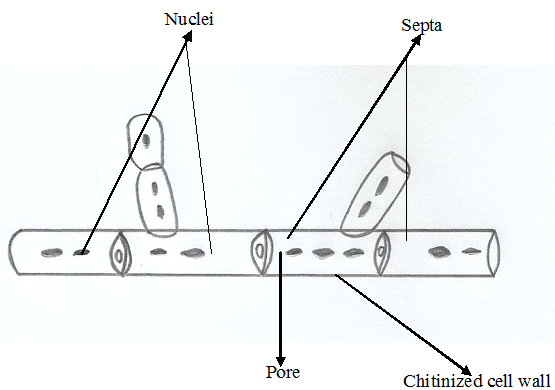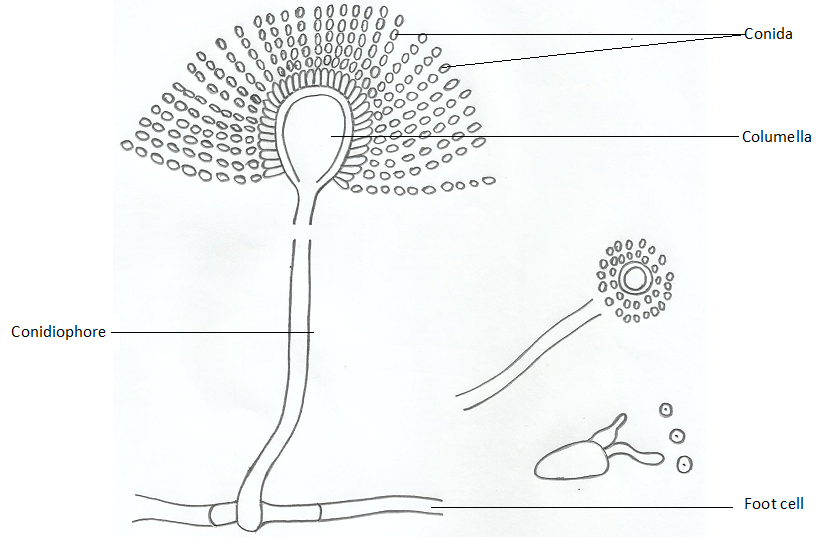Fungal infection is treated using antifungal drugs. Some of the drugs used for the treatment of mycoses in humans include:
- Polyenes (e.g. amphoteracin B and nystatin) which are cidal in action and binds to the fungal ergosterol membranes to disrupt the integrity of the fungal cell membrane;
- Azoles (e.g. itraconazole, ketoconazole, voriconazole, fluconazole, miconazole) which are static in action and inhibit the synthesis of ergosterol;
- Griseofulvin which is static in action and inhibits fungal growth by binding to microtubules during mitosis;
- 5-fluorocytosine or flucytosine which is an antimetabolite and inhibits nucleic acid synthesis and protein synthesis; echinocandins (e.g. caspofungin, micafungin) which are static in action and inhibits the synthesis of chitin and glucan in fungal cell wall, and
- Allylamines (e.g. terbinafine) which are static in action and inhibit the synthesis of ergosterol like the azoles.
PREVENTION AND CONTROL OF FUNGAL INFECTIONS
The prevention and control of mycoses is largely dependent on avoiding exposure to fungal spores or conidia and limiting contact with natural reservoirs of most fungal organisms. An intact immunity is vital to the prevention of fungal infections in humans. Thus people should avoid some risk factors such as prolonged antibiotic usage amongst other factors that weakens the body’s natural defense against fungal infection.
People who work in certain type of occupation such as farmers and forest workers should wear protective footwear to avoid traumatic introduction of pathogenic fungi into the body. While some fungal infections are non-communicable, others such as superficial mycoses (e.g. ringworm) are infectious; and avoidance of body contact or sharing of towels, soap and bathtub with infected people is critical to the prevention of the disease.
Fungicides and other antimicrobial agents should be used on the natural reservoirs of fungi (e.g. soil) to avoid the aerosolization of their spores which when inhaled can lead to mycoses in humans. People working in dusty areas should always wear protective face mask to avoid the inhalation of fungal spores.
References
Anaissie E.J, McGinnis M.R, Pfaller M.A (2009). Clinical Mycology. 2nd ed. Philadelphia, PA: Churchill Livingstone Elsevier. London.
Beck R.W (2000). A chronology of microbiology in historical context. Washington, D.C.: ASM Press.
Black, J.G. (2008). Microbiology: Principles and Explorations (7th ed.). Hoboken, NJ: J. Wiley & Sons.
Brooks G.F., Butel J.S and Morse S.A (2004). Medical Microbiology, 23rd edition. McGraw Hill Publishers. USA.
Brown G.D and Netea M.G (2007). Immunology of Fungal Infections. Springer Publishers, Netherlands.
Calderone R.A and Cihlar R.L (eds). Fungal Pathogenesis: Principles and Clinical Applications. New York: Marcel Dekker; 2002.
Chakrabarti A and Slavin M.A (2011). Endemic fungal infection in the Asia-Pacific region. Med Mycol, 9:337-344.
Mahon C. R, Lehman D.C and Manuselis G (2011). Textbook of Diagnostic Microbiology. Fourth edition. Saunders Publishers, USA.
Discover more from #1 Microbiology Resource Hub
Subscribe to get the latest posts to your email.



